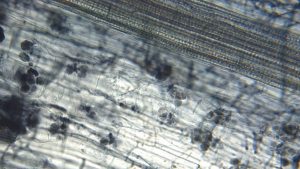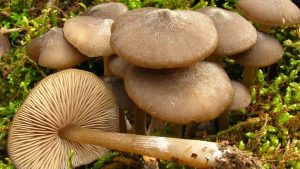#126: Xylobolus frustulatus, the Ceramic Fungus
Xylobolus frustulatus is one of my favorite fungi. It’s not particularly interesting, but there is just something surreal about the way it covers the surfaces of logs. From a distance, the fungus looks like a thin layer of weathered paper or parchment covering the surface of a log. Upon closer inspection, however, the fruiting bodies look more like a mosaic composed of tiny, white, ceramic tiles. Thanks to its unique appearance, frustulatus is often called either “the Ceramic Fungus” or “the Ceramic Parchment.”







![#011: Characteristics of Kingdom Fungi [Archived]](https://www.fungusfactfriday.com/wp-content/themes/hueman/assets/front/img/thumb-small-empty.png)


